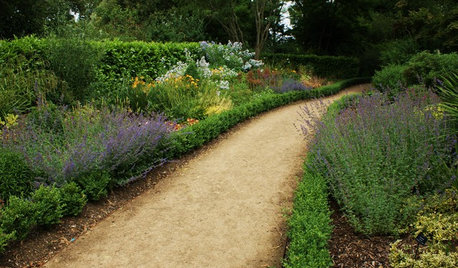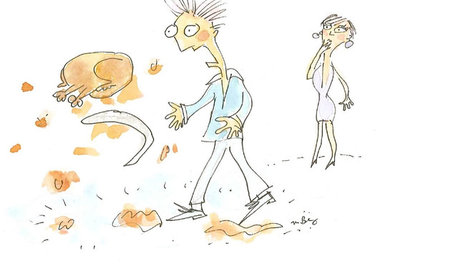Rock dust in 50 lb pails, how much do I need, Mr. Brown ?
jolj
12 years ago
Related Stories

HEALTHY HOMEWhat You Need to Know About Dust and How to Fight It
Breathe easier with these 10 tips for busting mites, dander and other microscopic undesirables
Full Story
LANDSCAPE DESIGN5 Gravel and Stone Types for a Rockin' Landscape
Give your garden design some textural bam with pebbles, granite, river rocks and other permeable materials
Full Story
LIFEHow Do You Make Your Tea and Coffee in the Morning?
A morning cup is a must for many, and preparation comes in many guises. We look at coffee and tea habits across the Houzz community
Full Story
KITCHEN DESIGNA Designer Shares Her Kitchen-Remodel Wish List
As part of a whole-house renovation, she’s making her dream list of kitchen amenities. What are your must-have features?
Full Story
BATHROOM DESIGNGive a Little Glitz for the Bath
Houzz Gift Guide 2010: What to Give Your Spa-Loving Friends
Full Story
PETSDealing With Pet Messes: An Animal Lover's Story
Cat and dog hair, tracked-in mud, scratched floors ... see how one pet guardian learned to cope and to focus on the love
Full Story
KIDS’ SPACESWho Says a Dining Room Has to Be a Dining Room?
Chucking the builder’s floor plan, a family reassigns rooms to work better for their needs
Full Story
MOST POPULARThanksgiving Tales: When the Turkey Tanks
Houzz readers prove adept at snatching victory from the jaws of entertaining defeat
Full Story
HOUZZ TOURSMy Houzz: A DIY Gold Mine in the Heart of Texas
From a sawn-down sleigh bed to book pages as wallpaper, the projects in this home are a testament to the homeowners' ingenuity
Full StoryMore Discussions








pnbrown
coachgrumpy
Related Professionals
Simpsonville Landscape Architects & Landscape Designers · Comstock Park Landscape Architects & Landscape Designers · Essex Landscape Architects & Landscape Designers · Salem Landscape Architects & Landscape Designers · Walnut Landscape Architects & Landscape Designers · Pottstown Landscape Contractors · Athens Landscape Contractors · Broadlands Landscape Contractors · Essex Landscape Contractors · Fort Atkinson Landscape Contractors · South Portland Landscape Contractors · Casselberry Landscape Contractors · Bethany Decks, Patios & Outdoor Enclosures · Mobile Decks, Patios & Outdoor Enclosures · Myrtle Beach Decks, Patios & Outdoor Enclosurescoachgrumpy
Kimmsr
pnbrown
joljOriginal Author
toxcrusadr
wayne_5 zone 6a Central Indiana
toxcrusadr
Jon_dear
pnbrown
gargwarb
toxcrusadr
gonebananas_gw
pnbrown
wayne_5 zone 6a Central Indiana
gargwarb
joljOriginal Author